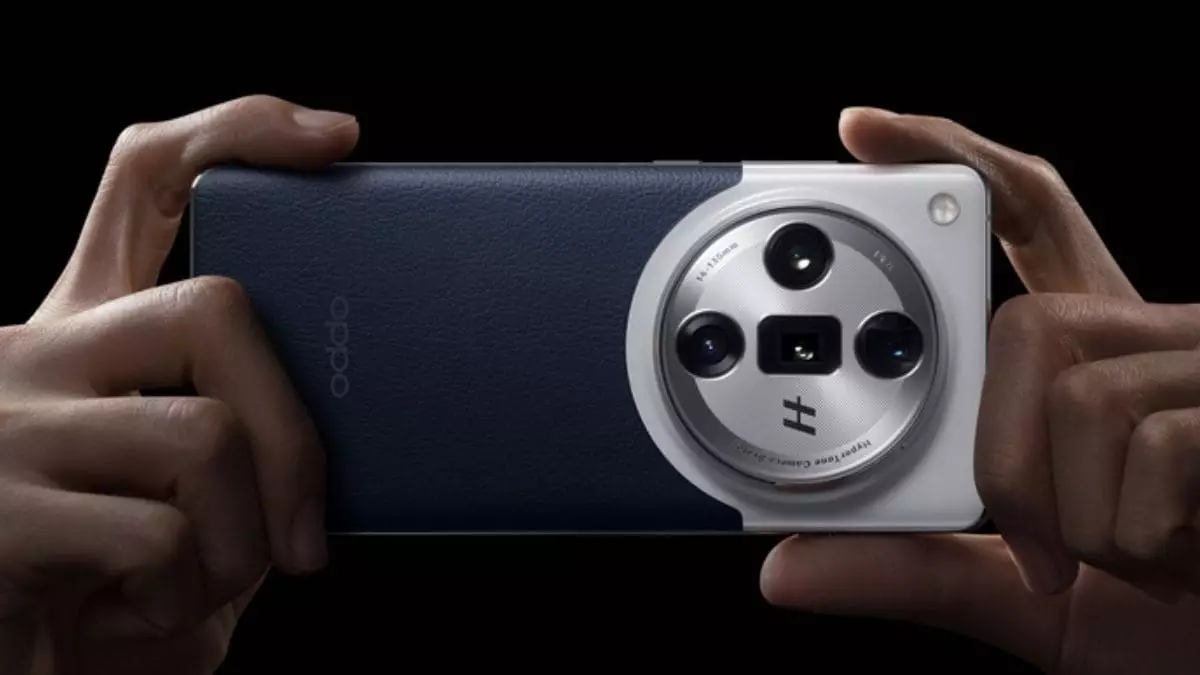Scheduled for launch on October 24, the Oppo Find X8 series is creating a significant buzz in the smartphone realm, particularly among photography enthusiasts. With the growing necessity for smartphones to provide not just communication but also high-quality photography, Oppo’s latest endeavor aims to address common user frustrations. Central to the Find X8’s appeal is a dedicated capture button for the camera, a feature that appears to be an innovative answer to the pressing needs of modern users seeking simplicity and efficiency in photography.
The introduction of the capture button is grounded in real-world user experiences, as outlined by Zhou Yibao, the Product Manager of the Oppo Find series. He emphasizes that the company has taken considerable steps to understand the “pain points” faced by users when capturing fleeting moments. This focus on user feedback signifies a broader trend in the smartphone industry, where manufacturers must adapt to the evolving desires of consumers who prize usability alongside technological prowess.
Zhou’s personal anecdotes highlight the practical challenges many face while trying to take pictures in less-than-ideal circumstances, such as extreme cold weather when wearing gloves or during active situations like rafting. These scenarios illustrate the limitations of relying solely on touchscreen interactions. By introducing a physical button dedicated to capturing photos, Oppo is responding to these challenges and providing a tool that enhances the user’s ability to seize moments effortlessly.
Interestingly, the design philosophy behind the Find X8’s capture button diverges significantly from the Camera Control button found on Apple’s iPhone 16 series. While Apple’s solution appears to encompass a multifunctional capacitive button that allows users to adjust camera settings, Oppo’s approach is refreshingly straightforward. The Find X8’s button focuses purely on one task: taking photos. This deliberate simplicity emphasizes ease of use—a factor that can often get lost amidst a myriad of features in high-end smartphones.
Zhou’s emphasis on the principles of ease, simplicity, and aesthetic coherence suggests that Oppo is keenly aware of the balance between form and function. This focus on user-centric design paves the way for a smartphone experience that prioritizes the user’s need to capture images quickly and efficiently.
Aside from the standout capture button, the Oppo Find X8 series is expected to offer an impressive array of specifications that further bolster its appeal. Early leaks suggest a vibrant 6.5-inch BOE display with a resolution of 1.5K and sleek bezels—a combination that promises an immersive visual experience.
In terms of photographic capabilities, the rumored triple rear camera setup, led by a 50-megapixel Sony LYT-600 sensor, signals Oppo’s commitment to developing a camera-friendly device. Such a robust optic system, when combined with the enhanced usability offered by the capture button, could position the Find X8 as a serious contender in the competitive smartphone photography space.
Underneath its elegant exterior, the Find X8 is set to be powered by MediaTek’s Dimensity 9400 chipset, which is anticipated to deliver superior performance. Coupled with an impressive 16GB of LPDDR5T RAM and up to 1TB of UFS 4.0 storage, users can expect a seamless experience across various applications, whether they’re editing photos or multitasking.
Finally, a substantial 5,700mAh battery paired with 80W SuperVOOC fast charging ensures that consumers can rely on the device throughout demanding days, without the constant worry of finding a charger.
The Oppo Find X8 series, with its unique capture button and powerful specifications, encapsulates an evolutionary step in smartphone design that prioritizes user experience. By addressing common pain points and offering straightforward solutions, Oppo demonstrates an acute awareness of its consumer base’s needs. As it prepares for launch, the anticipation surrounding the Find X8 suggests that it may not just be another smartphone but a pivotal tool in redefining how we capture and share our experiences.


Leave a Reply